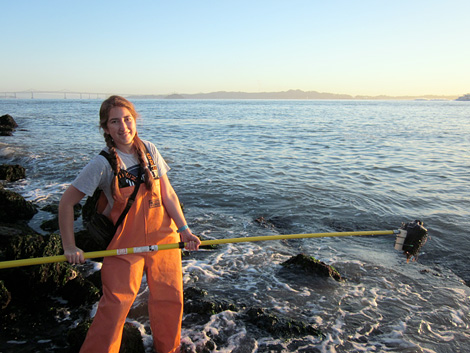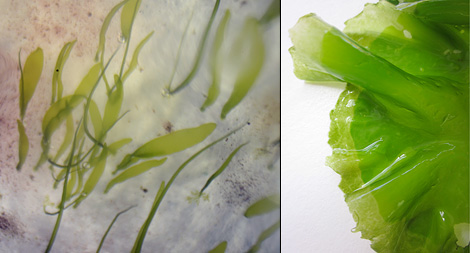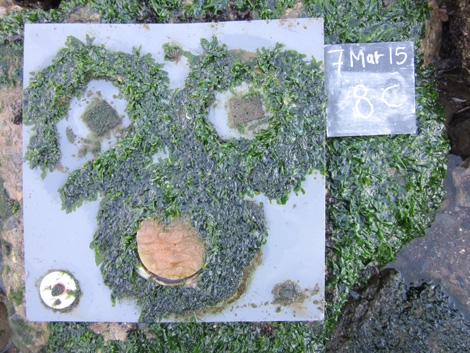Occurrences of green tides have been on the rise in recent years worldwide. The most impressive have been reported off the coast of China in the Yellow Sea. In August 2014, the Monterey Bay area experienced a green tide that resulted in the accumulation of the macroalgae, Ulva, on its beaches. Algal blooms often make the headlines in spring and summer yet they are not a new phenomenon. In fact, toxic algal blooms may have been responsible for bird, fish and marine mammal die-offs recorded in the fossil records of Chile’s Neogene and Gulf Coastal Florida’s Pliocene. Blooms are typically considered to be an indication of decreased ocean health and pollution but there are many other factors that contribute to algal blooms. While Ulva itself doesn’t produce toxic chemicals as it grows, the bacteria that decompose the alga once it begins to die can suck the oxygen from the surrounding seawater, suffocating other marine life.
Environmental factors necessary to generate an algal bloom include:
— Sunlight
— High nutrients
— Calm water
— Few grazers or predators
— Temperature
— Salinity
I’ve been interested in learning more about why we see green tides when we do. To do this, I’ve been focusing on the microscopic reproductive stages of the green-tide-forming algae, Ulva. In July 2014 I began collecting two liters of seawater every month from San Francisco Bay. I divide the water into culture flasks, add nutrients important to algal growth—such as nitrate, phosphate, ammonium, trace metals and vitamins—and culture it in environmental chambers on the UC Berkeley campus. These chambers are set to simulate summer conditions (16°C, 12-hour days) and every week I replace the seawater with fresh nutrient-enriched seawater. After four weeks I find young Ulva blades and tubes growing on the bottom of my culture flasks. Since I know the volume of the water I originally put into the flasks, I can estimate the number of propagules per liter that were present at the time of collection. I’ve been repeating this sampling at an additional four locations within San Francisco Bay once every season to estimate variation in spatial distribution of these reproductive stages.

Every cell in adult Ulva (blade or tube) has the potential to become reproductive, releasing up to 16 swimming spores from each cell. The cells along the margins of the blades usually become reproductive first; you can see the difference in color between the reproductive cells and vegetative cells in the image at right, below.

Along with the help of some UC Berkeley undergraduates, I am also tracking the settlement of young Ulva at my field site in Tiburon. We have attached settling plates made of resin to rocks in the intertidal zone near the Romberg Tiburon Center. These settling plates are submerged at high tide and exposed at low tide. Each month we return to the intertidal at low tide to collect the plates covered in algae and replace them with sterilized plates. Once back at the lab we use a dissecting microscope to estimate the amount of young Ulva growing on the plates. Now we are working on comparing the amount of young Ulva that grows in the cultures to the patterns of young Ulva we are seeing on the settling plates.

All photos courtesy of Rosemary Romero.